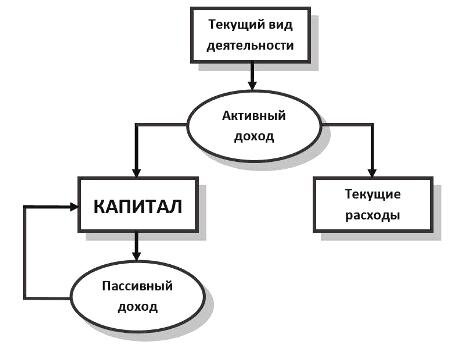Contents
Although some traders may be disappointed by this, most are better off waiting for confirmation and buying at a higher price than attempting to “get in early” and be trapped. Weak buying volume is an indication that there isn’t much interest in the security at a specific low price and that the bulls aren’t strong enough to push the price higher. Dear boss Rayner, I just want to let you knw you are blessing that God sent to me and money can’t buy the knowledge you are sharing everyday. Bull trap is another way and even simple way of good technical analysis. That is how I my account got stoped out trying to trade breakouts. You’ve learned what is a bull trap and how to avoid a Bull Trap and not get caught on the wrong side of the market.
How does a bull trap work?
So, what is a bull trap? A bull trap fools some traders into thinking a market or an individual stock price is done falling and that it's a good time to buy. But then it turns out it's not a good time, because the price soon resumes its descent, catching buyers in a money-losing trap.
Football fans are surely familiar with the flea flicker and Statue of Liberty plays. Markets have their own versions of ruses (what football announcers might call “trickeration”). Bear traps in trading are just as unpleasant to be caught in as the ones in real life — although they are a lot less likely to cost you one of your limbs. Learn how to trade forex in a fun and easy-to-understand format. Your results may differ materially from those expressed or utilized by Warrior Trading due to a number of factors.
How do you identify a bear trap?
This breakdown did not last long as the stock quickly reversed and forged a three-box reversal. The rising X-Column extended to forge a Double Top Breakout that fully negated the Quadruple Bottom Breakdown. The S&P 500’s retreat from all-time highs in January 2022 suggests investors had witnessed a bull trap weeks before this article’s publication date. An asset with an RSI of around 70 and above is considered to be overbought, which indicates a potential bearish reversal due to profit-taking.
A Multiple Top Breakout includes a Triple Top Breakout, a Quadruple Top Breakout and anything wider. A Triple Top Breakout occurs when two successive X-Columns form equal highs and the next X-Column breaks above these highs. A Quadruple Top Breakout is similar to a Triple Top Breakout, but with three successive X-columns forming equal highs instead of two. For a Bull Trap to be possible, this breakout can only be one-box. Breakouts that move two or more boxes above resistance do not qualify. The Bull Trap occurs when prices reverse after a one-box breakout and the subsequent O-Column moves at least three boxes lower.
Bull traps can emerge after a downturn appears to have been exhausted. From basic trading terms to trading jargon, you can find the explanation for a long list of trading terms here. There’s a tendency to want to fade these large forex software developer moves, especially on the first red day. Trying to short a stock like this right now is asking for trouble. The study found that position sizing, rather than asset allocation, accounts for 91% of performance variability.
We might think we’re onto something the rest of the market is missing, only for the market to dunk on us. This isn’t to say that stocks receiving new institutional sponsorship are infallible; they fall like rocks all the time. Because it takes institutional buyers several days to weeks to establish their full-sized position, they are likely to take advantage of any dip-buying opportunities. For example, real estate assets manager St. Joe recently went into a significant range expansion phase after a long period of range contraction. Rallies are strong and undisputed, and pullbacks are very shallow and timid.
In this scenario, a trader using only candlestick action to enter a trade would have fallen into a bull trap. Bear and bull traps are often preceded by significant RSI divergence. RSI, short for “relative strength indicator”, is a momentum indicator that charts the strength and weakness of an asset’s price.

A Bear Trap is a Multiple Bottom Breakdown that reverses after exceeding the prior lows by one box. Bull and Bear Traps provide quick indications of a signal failure, but chartists should be careful not to get caught in a catapult. Be sure to understand all risks involved with each strategy, including commission costs, before attempting to place any trade. Clients must consider all relevant risk factors, including their own personal financial situations, before trading. Bull traps can emerge after a market downturn appears to have been exhausted.
Short
An interesting result, considering that bull markets endure far longer than bear markets. The only reliable way a trader can avoid a bear trap is to avoid entering into a short position altogether. But there are alternatives to short selling, such as put options, or ways to avoid certain situations, such as low trading volume, when asset pricing and portfolio choice theory bear traps are more likely to occur. A bear trap involves short selling of a stock or other investment security. A decline in price triggers a bearish investor into a short sale, which can make the investor money if the price continues to fall. However, the quick reversal back up in price causes the short seller to lose money.

Rayner Teo is an independent trader, ex-prop trader, and founder of TradingwithRayner. The first move from USD6,200 to USD7,600 is supported by adequate buy volume, and this is reflected in the RSI moving from 25 to 75. The support breaks a little on the first retest, but holds on the second.
Role of psychology in bull traps
You witness the downtrend and then wait for a bullish reversal when you can buy the dip, thinking you’re purchasing the asset at a good price. The trap reveals itself as such when the price retreats and goes back on the downtrend. Now, it’s time to trade the Bull Trap pattern and profit from “trapped” traders.
This causes the asset’s prices to rise due to an increase in demand. The range of results in these three studies exemplify the challenge of determining a definitive success rate for day traders. At a minimum, these studies indicate forex trading tutorial at least 50% of aspiring day traders will not be profitable. This reiterates that consistently making money trading stocks is not easy. Day Trading is a high risk activity and can result in the loss of your entire investment.
Why I Dont Short Stocks
At this point, price rises again at F, causing bullish traders to enter long positions after seeing support at USD409.50. The Definitive Guide to Point and Figure, by Jeremy du Plessis, lives up to its title and is required reading for the Chartered Market Technician exam. Chartists can learn about 1-box P&F patterns/counts, 3-box patterns/counts and various trading strategies. The thinkorswim platform has hundreds of technical indicators and studies to choose from, plus dozens of drawing tools so you can create your own patterns.
There are no hard and fast rules when it comes to trading a bull or bear trap, which are unpredictable market movements by nature. The above is a real-life example of a bull trap in the Honeywell stock market. The stock price had seemed to break out of resistance levels and was on an uptrend.

This lack of momentum can be considered an early warning sign that the market is due for a reversal. The calculation generally covers 14-days, although it may also be applied to other timeframes. The period has no consequence in the calculation since it is removed in the formula. One day, I will have the opportunity of meeting you and telling you how much you have helped me in my financial freedom journey. After Build up with few red doji , i got a bullish candle closes previous high. Rayner, Thanks for explaining the real difference between true break out and a trap.
The price breaks out of a range to the upside, but then quickly falls back down and resumes its downtrend. As with a lot of things in trading, identifying a bull trap can be difficult. However, the best way to avoid bull traps is to notice warning signs in advance—such as low volume breakouts. Bear and bull traps are one of the most common trading pitfalls when trading cryptocurrency. Thankfully, it’s easy to minimize losses due to traps if you have the right cryptocurrency trading strategy and mindset. As always, be careful to study these candlestick patterns in the wider context of market trends.
Dont Get Caught in a Bull Trap
You may consider entering a short trade if the price falls back below the resistance level, as the move higher was a false signal. There are additional tools that can be used for confirmation, such as technical indicators or candlestick patterns. Bull and Bear Traps serve as an early warning system for chartists that a signal is failing. However, traps are not perfect signals and may instead evolve into catapults.
Stop-loss orders can be helpful in these circumstances, especially if the market is moving quickly, to avoid letting emotion drive decision-making. However, as the buying pressure increases, there will be a lot of traders looking to buy in, which will create a sudden price reversal. Additionally, the same novice traders will now be compelled to buy back the stock they have just sold out of FOMO. As the involved asset starts to see more demand, the prices will rise, allowing experienced traders to reap profits.
The stock has retreated from its highs but is still barely holding an uptrend pattern. Most bears probably think that it’s time for this stock to tank. Hard to blame someone for getting short early on in the day.
A one-box breakout is not that strong and the immediate reversal shows renewed selling pressure. A high RSI and overbought conditions also indicate high selling pressure in the case of a potential bear trap. In such cases, institutions may encourage selling off the asset by pushing prices lower.
Suspiciously huge bullish candlestick
The stock rallied off the lows and closed near its opening price. Trapped traders, long or short, are there for several reasons. They reach their max loss on that position and don’t have a stop loss. Instead of cutting their losses and exiting, they try to “win back” some of their losses tactically. Usually, the price is parabolic, and the fundamentals arguably don’t support the current valuation, at least in the eyes of value-minded shorts.
However, if you notice a reversal without a noticeable increase in volume, it could be that the price change would not last, and it is only a trap. To identify a bull trap, traders could watch for a bearish candlestick chart pattern just above the resistance area. A bearish candlestick pattern could indicate that buying momentum has slowed, and selling pressure is coming in. For example, the ‘shooting star’ candlestick pattern helped set the stage for the price decline on the EUR/USD chart.
